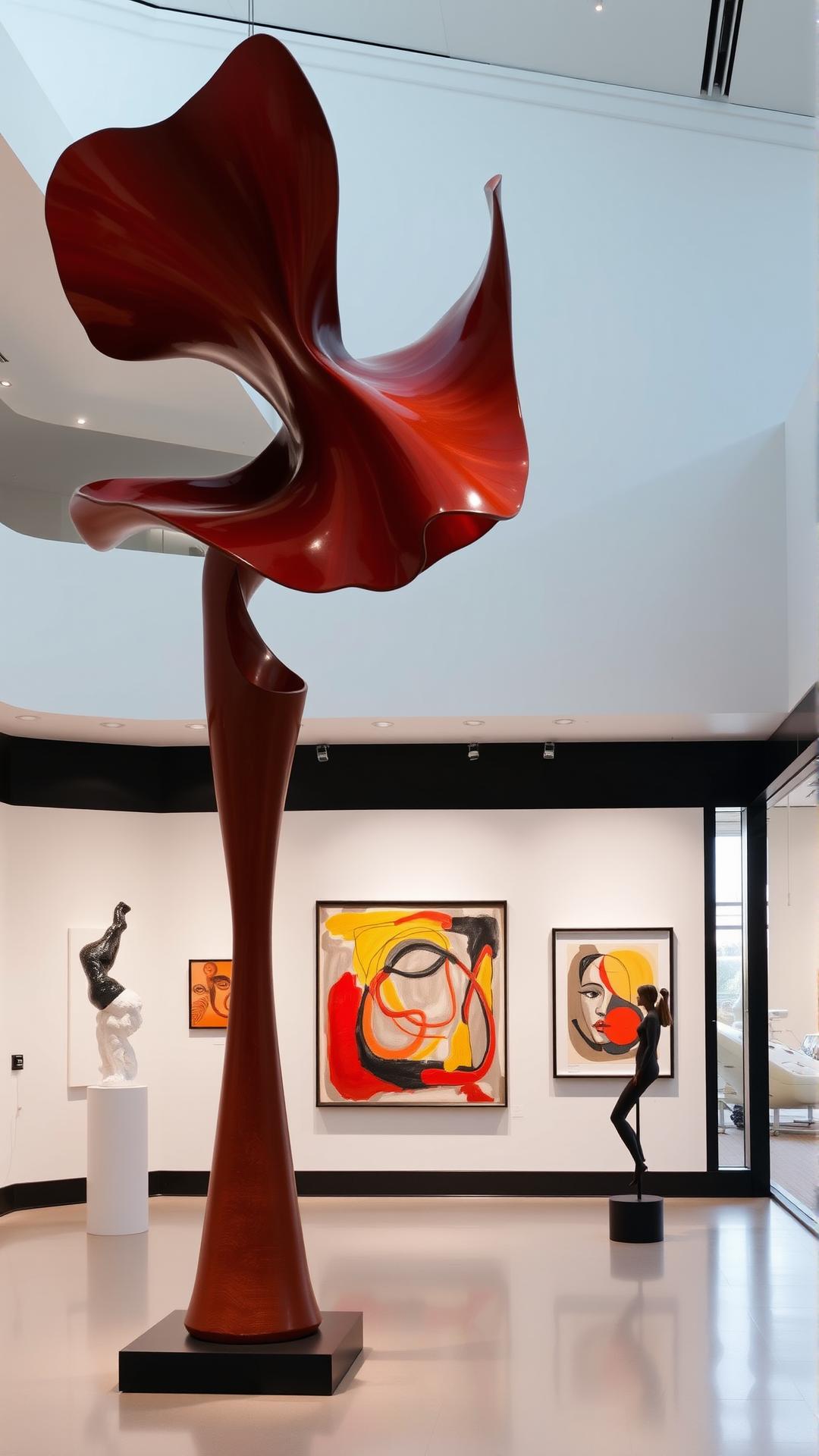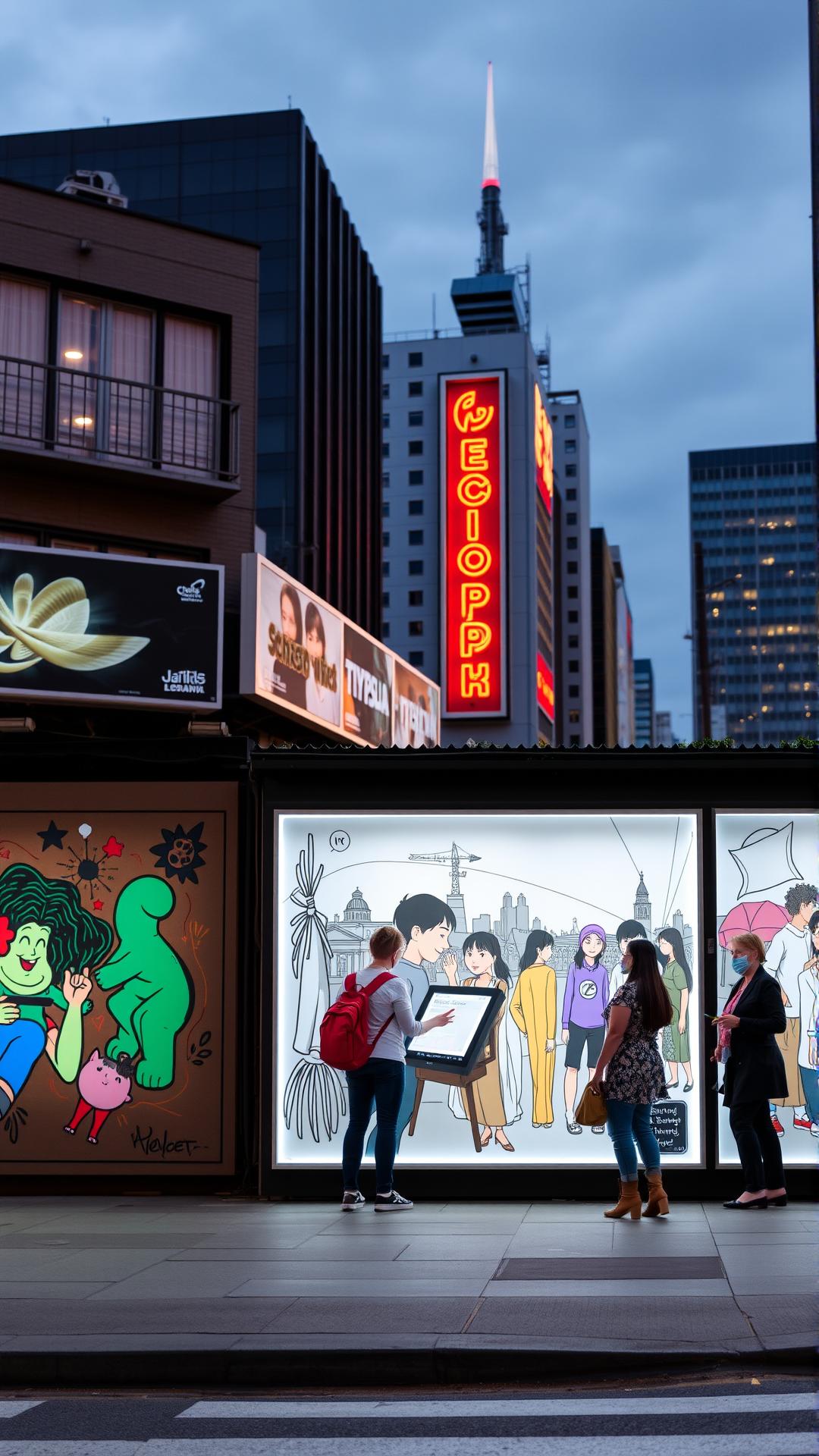
Express Emotions Boldly With Dynamic Expressionism Painting
Introduction
Expressionism painting stands as a bold assertion of individuality and emotional depth. Originating in the early 20th century, this artistic movement transformed how emotions and experiences were conveyed through visual art. Rather than merely depicting physical reality, expressionist artists utilized distortion, vivid colors, and dramatic forms to evoke feelings and moods. This shift marked a significant departure from previous artistic movements such as Impressionism, emphasizing subjective interpretation over objective representation.
In this article, let us explore the essence of expressionism, examining its historical roots and the profound influence it has had on contemporary art. By understanding the key characteristics and prominent figures within this movement, readers will gain insights into how expressionism continues to inspire and resonate with artists today. Join us as we explore the dynamic world of expressionism painting and discover its power to convey raw human emotion.
The Origins of Expressionism
Expressionism emerged as a profound art movement in the early 20th century, shaped by the tumultuous socio-political climate of Europe. The roots of this genre can be traced back to the intense emotional turbulence and existential questions provoked by events such as World War I and the rapid industrialization that transformed society. Artists sought to vocalize the inner turmoil that was often suppressed in their personal lives, leading to a radical departure from traditional artistic conventions.
The horrors of WWI significantly contributed to the emotional landscape from which Expressionism arose. The war disrupted social structures and shattered lives, creating a vacuum filled with grief, confusion, and dissatisfaction. Artists felt compelled to respond to this chaos, utilizing their work as a vehicle for emotional truth. Figures such as Edvard Munch, whose iconic painting “The Scream” resonated with feelings of anxiety and despair, exemplified how art was used to confront the heartaches of existence.
The rise of avant-garde movements in the late 19th and early 20th centuries laid the groundwork for Expressionism. The influence of Post-Impressionism, particularly the emotive use of color by Vincent van Gogh and the bold brushwork of Paul Gauguin, provided inspiration for many Expressionist painters. These artists moved away from realism, focusing instead on the expression of subjective experiences and emotions. They saw color not as a mere representation of reality but as a key tool to convey feelings, meanings, and psychological states.
The socio-political instability of the period also propelled artists toward Expressionism. With the idea of nationalism escalating, tensions rose in various European nations, leading to a sense of urgency in creatively exploring themes of identity and alienation. The urban experience, fueled by industrialization and the associated social upheaval, contributed to feelings of isolation. In this new landscape, Expressionist artists typified the duality of progress and despair, enabling personal narratives to intersect with collective experiences.
Expressionism was not merely an artistic movement but also a form of protest against societal norms. It allowed artists to rupture the boundaries of traditional aesthetics, making space for a bold exploration of inner emotions. This context transformed art into a powerful means of reflection and confrontation, effectively making Expressionism an evocative response to the chaos of its time.
Characteristics of Expressionism
Expressionism painting is defined by its vivid emotional resonance and profound psychological depth, allowing artists to communicate complex feelings and intense experiences. At the core of this movement lies a unique set of characteristics that contribute to the emotional impact of artworks, making them a true reflection of the human condition.
Exploration of Color Usage
One of the most striking features of expressionism is its bold and unconventional use of color. Unlike traditional art styles that prioritize realism, expressionist painters utilized color as a means of conveying emotion rather than replicating the natural world. Vivid primaries and clashing hues are common, often applied directly from the tube or in thick layers. This intensity prompts an immediate emotional reaction from the observer, as colors become symbolic of feelings ranging from joy to despair. For instance, the use of red may symbolize passion or anger, while blue might elicit feelings of sadness. By eschewing realistic palettes, expressionists demand that viewers confront raw feelings embedded within their works.
Form and Distortion as Emotional Tools
In addition to their radical use of color, expressionist paintings often employ distorted forms to further emphasize emotional states. Figures and landscapes are frequently exaggerated in style, revealing the inner turmoil or ecstasy of the subjects rather than a mere visual likeness. Distortion serves to blur the lines between reality and perception, inviting the viewer into a more intimate experience of the artist’s psyche. For example, elements may be elongated or contorted to reflect the anguish of a figure or the chaos of a scene, enhancing the overall emotional landscape of the piece.
Texture also plays a pivotal role in expressionist art. Thick brush strokes and impasto techniques create a sensory experience, allowing the audience to feel the urgency and intensity that the artist experienced while creating the work. Each stroke acts as a conduit for emotion, transforming the canvas into a dynamic expression of human experience.
The combined use of vibrant colors, distorted forms, and palpable texture creates a powerful language that transcends words, allowing expressionist artists to depict the complexities of life in a manner that resonates deeply with viewers. This approach encourages an intimate dialogue about emotion, fostering a connection that is as profound as it is universal.
Major Artists of the Expressionist Movement
Key Figures Defining Dynamic Expressionism
The expressionist movement flourished in the early 20th century, driven by a wave of artistic innovation and emotional depth. Among its most significant contributors were Ernst Ludwig Kirchner, Wassily Kandinsky, and Egon Schiele, each of whom infused their unique vision into the fabric of expressionism, shaping its bold narrative.
Ernst Ludwig Kirchner emerged as a seminal figure within the Die Brücke (The Bridge) group, founded in Dresden, Germany. His artworks often reflected a tumultuous relationship with urban life, characterized by vibrant colors and dynamic forms that communicated raw emotional energy. Kirchner’s piece “Street, Dresden,” for instance, is celebrated for its striking portrayal of alienation amid the bustling city. The jagged lines and unsettling color choices unequivocally convey a sense of anxiety and disconnection, revealing a layered commentary on modern existence.
Wassily Kandinsky, often hailed as a pioneer of abstract art, contributed significantly to the expressionist movement by delving into the emotional resonance of colors and shapes. His theoretical writings, such as “Concerning the Spiritual in Art,” emphasized the importance of artistic expression as a reflection of inner feelings. His work “Composition VII” exemplifies his concepts, presenting a swirling amalgamation of colors and forms that strives to evoke an emotional response from the viewer. Through his innovative use of non-representational forms, Kandinsky expanded the boundaries of artistic expression, paving the way for future movements.
Egon Schiele, another pivotal figure, is known for his unnervingly introspective portraits and figure studies that conveyed human vulnerability. His raw, expressive lines and unorthodox perspectives challenged traditional notions of beauty and eroticism. Notable works like “Self-Portrait with Physalis” reveal the depth of Schiele’s emotional turmoil and existential musings, using distortion and intense colors to capture the complexities of the human psyche. His candid portrayal of sexuality and psychological angst made him a controversial yet influential artist in the expressionist landscape.
These artists, through their bold styles and emotive content, played a crucial role in defining dynamic expressionism. Their works not only brought forth new perspectives on art but also left an indelible mark on how emotions can be expressed through dynamic forms and vibrant colors.
Expressionisms Influence on Modern Art
Expressionism’s Reach into Contemporary Movements
Expressionism has left an indelible mark on modern artistic movements, profoundly shaping the trajectory of abstract expressionism and contemporary art. By emphasizing intense emotional experiences, expressive color palettes, and a departure from realistic forms, expressionism encouraged artists to embrace the rawness of human emotion, paving the way for subsequent artistic explorations. Notably, the movement’s ethos can be seen in the works of various modern creators, who incorporate expressionist principles into their unique styles.
The emergence of abstract expressionism in the mid-20th century signals one of the most significant shifts influenced by classical expressionism. Pioneers like Jackson Pollock and Mark Rothko drew heavily from the emotional intensity and spontaneity characteristic of earlier expressionist works. Pollock’s fervent action painting serves as an exemplary embodiment of this influence. His drip techniques allowed for a direct channeling of emotion onto the canvas, transforming paint into an expression of feeling rather than mere depiction.
Rothko’s color field paintings also exemplify the influence of expressionism, prioritizing the emotional resonance of color. With his minimalist approach, Rothko sought to evoke deep, contemplative reactions from viewers. The ethereal quality of his works aligns with expressionist ideals, attempting to tap into the collective human experience by evoking feelings of awe and introspection.
Contemporary artists have continued to draw inspiration from the foundations laid by expressionists. Artists like Anselm Kiefer and Julie Mehretu exhibit the emotional gravity and abstraction synonymous with the movement. Kiefer’s monumental canvases often confront themes of memory, trauma, and history, reflecting the somber undertones traditional to expressionism. Mehretu blends abstraction with narrative, using layered marks and vibrant colors to articulate stories relevant to our time—an ode to the boldness of emotional expression.
Through these varied interpretations, expressionism continues to resonate across different artistic domains. Its emphasis on personal experience and emotional truth allows contemporary art to explore complex themes, reflecting societal changes and the myriad feelings they invoke. This enduring legacy of expressionism highlights its significance in shaping modern art, encouraging artists to express emotions boldly and transform the canvas into a dynamic realm of human experience.
Engaging with Expressionism Today
Expressionism’s Impact on Contemporary Society
Expressionism continues to resonate deeply within contemporary society, allowing individuals to communicate their most profound emotions through dynamic visual language. As current events unfold—shaping our collective psyche—artists find inspiration in the turmoil, struggles, and triumphs of everyday life. The fast-paced world, marked by social upheaval, environmental crises, and personal challenges, serves as fertile ground for expressionist artists, who channel their inner turmoil into vivid canvases that speak volumes about the human experience.
Today’s artists often transcend traditional boundaries, employing mixed media, technology, and unconventional methods to push the envelope of expressionism. They reflect a diverse range of perspectives, notably those from marginalized voices and personal narratives that break the mold of societal norms. These artists strive to evoke visceral reactions from viewers, inviting them to engage emotionally with the artwork. Whether through bold color choices, exaggerated forms, or striking textures, contemporary expressionists endeavor to touch on the rawness of human emotion, reminding audiences that vulnerability can be a conduit for strength.
Personal Narratives and Thematic Exploration
Personal narratives have become a powerful influence in contemporary expressionist painting. Artists draw on their lived experiences, using their backgrounds, traumas, and joys to inspire their creative processes. Themes of identity, mental health, and social justice emerge as central elements in their work. For instance, an artist may confront their own struggles with anxiety, utilizing chaotic brushwork and vibrant colors to convey the complexity of their emotions. Similarly, social issues such as racial inequality or climate change provoke significant responses, prompting artists to manifest their urgency through gripping visual storytelling.
Through exhibitions and discussions, contemporary expressionism creates a platform for dialogue around pressing issues that permeate society. By engaging with these themes, artists remind us that art holds the power to catalyze change and foster empathy. Whether it’s through the depiction of dystopian landscapes that parallel our reality or abstract imagery that sparks introspection, the expressive nature of this movement remains relevant, proving that art is a mirror reflecting our collective consciousness. In essence, as contemporary artists continue to engage with expressionism, they not only preserve its legacy but also forge a path toward new emotional landscapes that challenge and inspire.
Conclusions
Expressionism painting serves as a vital lens through which we can understand the complexities of human emotions and experiences. The movement’s emphasis on subjective expression allows artists to communicate profound feelings and convey narratives that resonate deeply with viewers. From its roots in early 20th-century Europe to its ongoing influence in today’s art world, expressionism continues to challenge conventional norms and ignite passion in creative expression.
Engaging with expressionism invites us to reflect on our own emotions, experiences, and perceptions. As artists and audiences alike embrace the boldness of this movement, we are reminded of the importance of vulnerability in art and life. Expressionism reminds us that it’s not just about what we see but how we feel, urging us to express our innermost truths with bravery and integrity.















